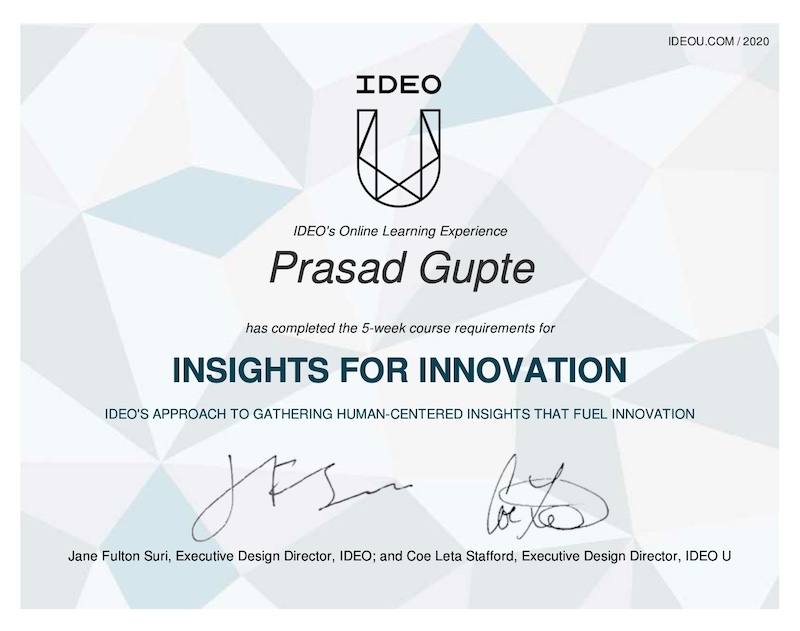Part of the reason I love being in product is how success is directly tied to identifying and solving the right problems. Of course this requires sifting through data, but numbers are useless if you can’t contextualize them. And that requires empathy — for customers, for people that work with you, and our eco-system. My colleague John is great at this, and my first port of call to confirm if this course was a meaningful investment to get better at my craft. Thanks for your nod, John.
The Insights for Innovation course from Ideo is spaced over 5 weeks. Primarily online learning, it has continuous collaboration with other learners, and weekly mentor calls. Don’t expect tons of theory as its designed to be application-first. Isn’t learning by doing is the best? Here’s what I learned:
#1 Don’t let your design marginalise minorities.
An idealistic statement that’s weightier now then ever. As builders, we fail to realise that equity can be built into good design. If we did, it wouldn’t take a revolution for product packaging to drop racial references. Pause for a bit and imagine thinking about eating habits when designing a product for a healthy lifestyle. Who did you think of?
Did you those consider humans that work in hazardous work environments like mining, or those that don’t have enough access to daily nutrition? To contextualise the latter, the addressable market for that problem is close to a billion people.
#2 Study extremes even if you only build for core users.

Customer advocacy is expected of product people. But too often personas limit our thinking with an averaged description of our majority users. Extremes are humans whose needs and environment varies drastically from the typical user or use case. Addressing edge case scenarios expands the range of your solution – not the job to be done. Extremes amplify every other user’s needs, stretching our thinking to come up with breakthrough ideas that expand the range your product serves.
In hindsight, this is how we innovated procure-to-pay at Zycus in 2010. We bet that insights from early (SMB) adopters would help us build for the majority and cross the chasm where most products fall through. PS: If you haven’t read Crossing the Chasm by Geoffrey Moore, please do. One exercise in the course prompted thinking about extreme experiences one could have in a vehicle. What comes to mind? Some extreme ideas at the end ⬇️.
#3 Get into your users’ shoes, until it hurts.
Dogfooding, tech’s shorthand for eating your own dog food, isn’t enough. Real empathy takes way more immersion to appreciate perspectives. You’re not make intellectual observations, but sensing emotions and feelings. These result in the best insights; ones that motivate us to design for people’s inner states.

Through the course, I was applying what I learnt to getting children to read more. In that case, true empathy would imply experiencing things like..
- Spending a day following children through their schedule to understand the challenges and emotions the go through all day. What activities energise them, and how much motivation they have left at the end of the day? what does it take to get them start reading? What else might they do in that time?
- Lie tried in bed, and have someone read a book to me. Understand emotions. Do I comprehend? is it too fast/slow? what about new words?
- Try reading to my child after a hectic day? How does engagement affect the child’s interest?
- What techniques teachers and schools apply to help children read?

In summary, I’d say the course only sharpened my human lens to identifying insights and generating impact through design. To help understand perspectives, I’m sharing a challenge I took on as part of the course.
Think about extreme experiences one could have in a vehicle.
- A new driver getting advice from an expert (or pressured by friends).
- Driver (and/or passengers) feeling anxious, depressed, excited, inattentive.
- Driver who is drunk or abusive.
- Someone new to regulations or routes.
- Drivers paid per trip.
- Strangers in a car pool.
- Driving a car where the speedometer reported in a different unit.
- Driving whilst engaging in another activity: texting, debating, eating, drinking, watching over kids, engaging in sexual activity.


